Subscribe by Email
-
Recent Posts
Category Archives: Books
A Constellation and Last September
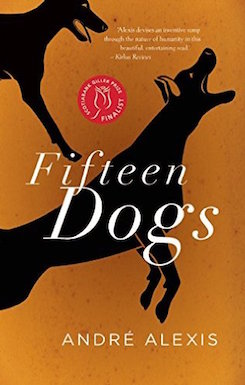
First of all congrats to Andre Alexis who won the Giller Prize, Canada’s top literary award, this week for his novel “Fifteen Dogs,” which is a philosophical story about a group of dogs overnighting at a Toronto vet clinic that are suddenly capable of human intelligence. I heard the author read from his novel at our city’s book festival last month, but I haven’t gotten my hands on a copy of “Fifteen Dogs” just yet. It slightly reminds me of George Orwell’s “Animal Farm” because of the talking animals and the points being made about the human condition, but we will see. Have you read it yet?
Meanwhile, I finished one meaty literary read this week, as well as one light murder-mystery book. So between these two opposites my mind is a bit mush, though they did even each other out pretty well. The heavier read, Anthony Marra’s 2013 novel “A Constellation of Vital Phenomena,” is a book I picked for my book club to discuss in December since it received so many high accolades when it first came out and I’d been meaning to read it for a long time.

Set in Chechnya during its second war with Russia, the novel is about a small group of people struggling to survive in the bleakest of circumstances. One of them is an 8-year-old girl, Havaa, who hides when her father is abducted by Russian soldiers in the middle of the night. Her neighbor, Akhmed, is an incompetent doctor, who takes her to a crumbling, nearly deserted hospital to seek refuge for her. But Sonja, the doctor in charge there, is hesitant to risk harboring the child, even though she knows without it, the child will likely disappear as Sonja’s sister did. Akhmed’s “uncle” is another main character, who writes long histories of the Chechen land, and is conflicted by his once-tortured son, who’s a government informant that rats on people in their village. All of the characters become connected in intense ways as they navigate five days amid the brutal war.
“A Constellation of Vital Phenomena” involves tough material and isn’t an easy read, but for those who stick with it, its rewards are considerable. A few challenging things about the book perhaps are how it alternates chapters in different times and points-of-view, and throws in quite a bit of context and details about Chechnya and the war that one might not otherwise know. A lot of the pages also don’t have any paragraph breaks so the text seems to rattle on at length, adding to its density at times.
And yet, I became very intertwined with the characters and felt the suspense of whether or not they would survive or see their families again. They seemed so real and vivid. Sonja, the top-notch doctor, who returns from abroad to her homeland to try and find her sister, is my favorite of the bunch. She is gritty, brilliant, and sacrifices so much to help others, which is ultimately what I took away from the novel — the main characters’ humanity despite all the hell they go through. As author Anthony Marra told NPR: “It’s a novel about people who are trying to transcend the hardships of their circumstances by saving others.”
“A Constellation of Vital Phenomena” should stimulate a good discussion with my book club as there are quite a few characters in it and it involves such themes as sacrifice, betrayal, and forgiveness. In terms of the war in Chechnya, the book doesn’t seem to be on one side or the other, but is more about the ordinary people who get caught up in the war’s crosshairs. I found the novel to be pretty eye-opening about the Chechen country and war, which I only vaguely remember from news stories back then. The author obviously did a lot of research and visited the area, which shows. The novel is definitely a moving tribute to the people there who went through such things.

Meanwhile, the lighter book I finished this week was an audiobook called “The Last September” by Nina de Gramont. It’s a love story, murder-mystery type book that is set mainly in Cape Cod, Mass. At the book’s beginning, the narrator, a girl named Brett, whose marriage is on the rocks, finds her husband, Charlie, murdered. The story then goes back in time to how Brett met Charlie through his younger brother Eli, who Brett was good friends with, and tells of Brett’s long relations with the brothers — Charlie, a popular ladies man, and Eli, who becomes mentally unstable. Brett eventually snags Charlie to be her husband but first breaks off an engagement to Ladd, a well-off guy who grew up in the same cove as the brothers.
“The Last September” takes quite a circuitous route to find out who killed Charlie, and I was reminded in its suspenseful parts of Gillian Flynn’s novel “Gone Girl.” It kept my attention for the most part, but overall “The Last September” seemed too much like chick-lit to me, and it’s not a genre I typically read. I would recommend it for chick-lit murder-mystery readers. I thought it was well done for that genre — maybe a bit unrealistic in places — but just not a book in my favorite wheelhouse. Do I need to explain myself further, or have I opened a can of worms with my assessment?
What about you — have you read “A Constellation of Vital Phenomenon” or “The Last September” and if so, what did you think?
Continue reading
Posted in Books
21 Comments
The Indifferent Stars Above
I don’t recall when I first learned about the Donner Party — those ill-fated pioneers who set out from Illinois in covered wagons for California in 1846, only to become snowbound in the Sierra Nevada Mountains without adequate provisions. It could have been in junior high history class, or I could have read about the group on my own. Perhaps the Donners were a prerequisite for growing up in California. You didn’t exactly know where you learned about them, you just sort of knew. And theirs was a story you didn’t really forget.
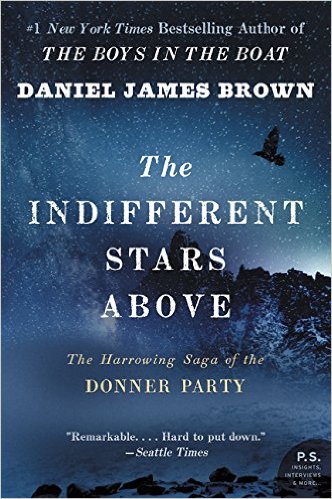
Over the decades, so many books have been written about the Donner Party, both nonfiction and fiction alike — it’s definitely been the Titanic of pioneer stories. Quite a few years ago, I read James D. Houston’s novel “Snow Mountain Passage,” which enlivened aspects of the Donners’ story for me but perhaps didn’t give me the complete picture. Thus, when I was recently offered an opportunity to review Daniel James Brown’s nonfiction book “The Indifferent Stars Above: The Harrowing Saga of the Donner Party,” I pretty much jumped at the chance.
For one thing, I’ve always been keen on reading about epic, real-life survival tales. Thanks to books, I’ve been to the Antarctic with Shackleton a number of times; ditto the South Pole with Roald Amundsen and Robert Falcon Scott; I’ve been on the Titanic trying to figure out exactly what happened and when; I’ve been “Into the Wild” and “Into Thin Air”; and somewhere in my stack of books to read, I’m going to go underground with the 33 Chilean miners. So it wasn’t a stretch that I would also want to climb aboard the most infamous pioneers’ wagon train to figure out exactly what went so horribly wrong. Sure they were to cross sixteen hundred miles through rough foreign territory with old weapons and equipment to move to a place they’d only recently heard about, but they were among a large wagon train and they were well stocked for the five or six month journey. Everything seemed to be going according to plan, or was it?
The book “The Indifferent Stars Above” also appealed to me because like many others, I didn’t realize that Daniel James Brown — the same author of the bestselling “The Boys in the Boat” — had written about the Donner Party before the boat book. Perhaps who better to reawaken the Donners’ daunting journey. Renown for his narrative nonfiction style, I figured Brown would be a perfect match for capturing what the pioneers went through in a well-researched, page-turning way, and as I assumed, the book did not disappoint.

I was lured into “The Indifferent Stars Above” pretty much from the start. The book focuses on the Graves family, particularly Sarah Graves, the 21-year-old, eldest daughter of Elizabeth and Franklin Graves whose eight other young children were traveling with them as well. Sarah, pictured at left, had just become married when they had set off on their journey and she had her new husband by her side. By all accounts, Sarah and the Graves family were in high spirits as they stopped in Missouri for supplies and joined a much larger wagon train headed west, led by the Donner and Reed parties.
It wasn’t long before I latched on to Sarah’s wagon as the book traces the journey with her family and others across the Plains, through the Nevada desert, and into the mountains. Like her parents, Sarah seemed well liked and hardy, devoted to helping her younger siblings along the way. On the whole, I was pretty amazed by all the young children and babies the pioneers were traveling with on foot and in their wagons. Good grief, the parents didn’t seem to think twice about moving their young brood so far from home despite the harsh conditions.
“The Indifferent Stars Above” does well in giving significant insight into the social and historical context of the times. It talks about the illnesses of the day, the threat they feared from Indians, how war in California was going on with Mexico, and how the pioneers lived without much in the way of toothbrushes (they hadn’t been invented yet), baths, or laundry, while battling such pests as lice, bedbugs, and fleas. The pioneers seemed a much tougher group than we are today, and I wouldn’t have worried about them so much if I hadn’t already known of their journey’s tragic outcome.
But as the book explores, multiple factors doomed the Donner wagon train. They took an untested route and arrived at the Sierra Nevada Mountains exhausted and too late in the season. Like “Into Thin Air,” they were too late to their destination, and a blizzard had already begun to blow. Oh how I wish in my reading, I could have changed their outcome! Their story was like a darkening vortex that I knew I’d have to go through. Sarah Graves and her family became stuck with the other families, snowbound and hungry, at the base of a mountain lake, well below the pass they needed to get over to get into California. Most of them tried to survive by staying in make-shift cabins at the lake, while others went for help. But eventually only half of the 87 pioneers in their wagon train would survive.
Sarah Graves was one of 15 snowshoers who scaled the snowy pass to go for help. They were trying to get to an outpost across the mountains that was more than 60 miles away, but they didn’t even have a compass. (I’m reminded a bit of Shackleton’s epic escape in the Antarctic some 70 years later.) “The Indifferent Stars Above” details the snowshoers’ harrowing journey through blizzard conditions as well as those who stayed behind at the lake camp, snowbound for four months. The story includes some of the worst suffering from starvation and hypothermia that I’ve ever read. It’s heart-wrenching agony, and yet all I could do was read on and hope the snow would abate for once and that those who went for help would make it through.
It’s a survival tale that’s undoubtedly hair-raising, and Brown’s narrative of it is quite riveting. I felt like I was on the mountain, trying the best I could to help them escape. Along the way, the book also includes some insightful scientific research from today about hypothermia, snow blindness, and caloric intake and what the pioneers likely faced both physically and psychologically. It also talks about the high snow levels from the winter of 1846-1847, a winter that was also unkind to the men of British explorer Sir John Franklin’s expedition who were attempting to find a Northwest Passage.
Much has been written about the Donner Party and the cannibalism that a number of the pioneers resorted to for survival after others had passed away. In history books, the group is often seen not as heroic but as a group to be disdained or shunned completely. Not many want to think about the Donner Party for that reason. While Brown’s book “The Indifferent Stars Above” doesn’t ignore their cannibalism, it attempts to focus the saga more on it as a survival story since half of the pioneers got out alive. The book does include quite a bit of the gory details, and a few times, I felt like I was going to be sick. You definitely get the full picture of their struggles, along with the cannibalism, and yet Brown’s narrative gives the pioneers such as Sarah Graves a humanity perhaps they aren’t often credited with.
I have to praise the author and his book “The Indifferent Stars Above” for opening my eyes a bit and not demonizing the families who were there. Sarah Graves seemed an ordinary girl for her times, and yet was able to pull off an extraordinary feat, one that others died trying. You’ll want to stick around at the end to hear what became of her life in California and others long after that gruesome winter in 1846-47.

Thanks to Trish Collins at TLC Book Tours and William Morrow Paperbacks for providing me with a copy of the book to review.
What about you — have you read about the Donner Party before — or are you interested in “The Indifferent Stars Above”?
Posted in Books
40 Comments
The Dinner and November Preview
Happy Halloween weekend. I’m getting an early start as we’re headed out tomorrow to a cabin in the mountains to do some hikes and exploring. Hopefully it won’t be too spooky there like “The Shining,” which is on TV tonight along with Jamie Lee Curtis in the scary “Halloween” flick. Quite a gore-fest. Meanwhile the year is winding down and there are only two months left to cram in one’s reading for 2015.
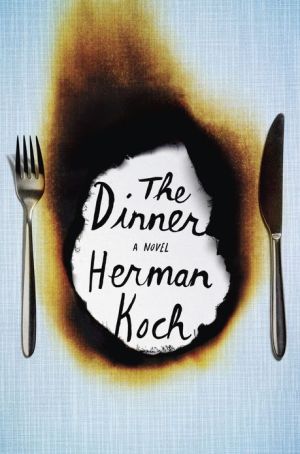
Speaking of which, this week I finished Herman Koch’s novel “The Dinner” on audiobook. I’m a bit late to the party on this big international bestseller — it was published in the U.S. in 2013 — but I’m glad to have finally gotten to it because it’s both dark and excellent. It’s one of those twisty stories you can’t talk too much about other than to say it’s about two couples (two brothers and their wives) who meet for dinner at a high-end restaurant in Amsterdam to discuss a situation regarding their 15-year-old sons.
At first “The Dinner” is darkly funny as Paul, the unemployed teacher who narrates the story, skewers just about everything around him: from the restaurant and parenting values to his political brother, Serge, a candidate to be the next Dutch prime minister. And oh my, does he skewer his brother! I had to laugh quite a few times. But you also have to be patient wading through the many digressions in the book. Paul’s narration seems to go off on a tangent almost at every whim, which can drive one a bit batty. Luckily most of the tangents are pretty entertaining in and of themselves and serve a purpose.
After awhile “The Dinner” takes a psychological turn as secrets and past histories are divulged and talk of the sons ensues during the five-course meal. It’s disturbing stuff and perhaps not too unlike a dark Gillian Flynn thriller. I was caught up in it and had to fly through till the end to see what happens. It’s a book that makes for an entertaining and compelling audiobook, and it’s excellently read by British actor Clive Mantle. “The Dinner’s” dark and biting nature might not be for everyone, but I admit I was pretty glued to it.
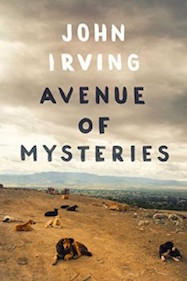
Meanwhile looking ahead to November releases, there’s new books from such popular authors as Stephen King, John Irving, Isabel Allende, and a 64-page re-published stand-alone story by Gillian Flynn. I’m eyeing a couple of these especially since John Irving is speaking at my public library here on Dec. 3. If I’m to go, I better check out his latest novel “Avenue of Mysteries” pretty pronto.

Also Mary Gaitskill’s new novel “The Mare” looks enticing. According to the publisher, it’s “the story of a Dominican girl, the Anglo woman who introduces her to riding, and the horse who changes everything for her.” The book traces the girl’s journey from inner city to small-town stable in upstate New York. So count me in as I want to check out Gaitskill’s style, since she’s renown for her edgy writing.
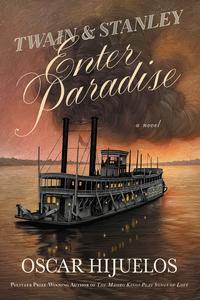
Also I’m curious about Oscar Hijuelos’s posthumously published novel “Twain & Stanley Enter Paradise” which is inspired by the real-life, 37-year friendship between famed writer Mark Twain and legendary explorer Sir Henry Morton Stanley. I’ve heard pretty enthusiastic things about this richly detailed epic, which Booklist calls “an extraordinary feat of imaginative historical re-creation.” Hmm.
Meanwhile the height of fall movie season is upon us and there’s plenty to pick from. Such action block busters as the new James Bond flick, “Spectre,” and the final Hunger Games movie “Mockingjay Part 2” are available this month, as well as one about the trapped Chilean miners called “The 33.” Though if it’s a drama-romance you want, there’s one with Angelina Jolie and Brad Pitt called “By the Sea,” or the much talked about Eddie Redmayne-acted film “The Danish Girl,” about the journey of a transgender pioneer.
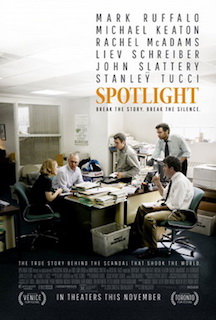
I’m sure these are all fine and dandy but my movie picks for November are “Spotlight” and “Carol,” both of which have received some promising reviews. “Spotlight,” you might know, is about the Boston Globe’s uncovering of the child molestation scandal and cover-up within the local Catholic Archdiocese. The movie has a large cast with Mark Ruffalo, Michael Keaton, Liev Shreiber, and Rachel McAdams among others. I usually like these journalism/newspaper kinds of movies since that’s what my job background is, and it’s fun to see how factual or not they are.
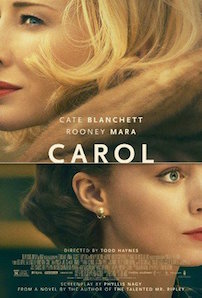
“Carol” is another film adaptation of a Patricia Highsmith novel that’s set in the repressively-portrayed 1950s. It’s about a department store female clerk, played by Rooney Mara, who falls for an older woman, played by Cate Blanchett. Todd Haynes is the director again, who did a similar type of film set in the 1950s — “Far From Heaven” — back in 2002. You remember a sad Julianne Moore? That one was excellent and I suspect this one will be as well. If Cate Blanchett is in it, I say “Go.” I also hope to see Blanchett’s other film out from last month called “Truth.” So it could be a Cate Blanchett-kind-of month.

Lastly in November releases, there’s new albums by Sara Bareilles, Chris Isaak, and Tim McGraw among others. They all have such strong voices. But you know, pick of the month has to go to Adele hands down for her upcoming album “25.” I’m not sure yet what to think of the album’s first single “Hello,” but I look forward to hearing more off “25.”
So how about you — have you read Herman Koch’s novel “The Dinner,” and if so, what did you think? Or which books, movies, or albums out this month are you most looking forward to?
Posted in Books, Top Picks
16 Comments
The Dog Stars and Movie Briefs
This week I’ve been reading a nonfiction book about the doomed Donner Party — you know, the group of emigrants lead by George Donner and James Reed who set out from Missouri for California in covered wagons in 1846. It’s by the same author — Daniel James Brown — who wrote “The Boys in the Boat” and I’m enjoying it quite a lot. I’ll report back more once I get through its snows of the Sierra Nevadas and it comes to an end.
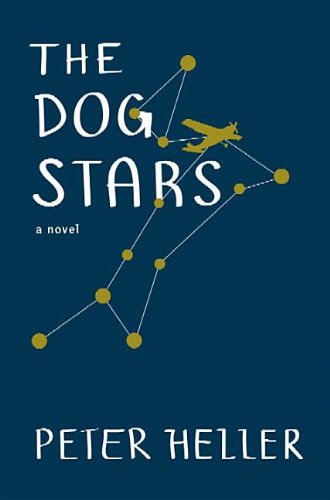
Meanwhile I finished listening to the audiobook of Peter Heller’s 2012 novel “The Dog Stars.” Of course it’s another apocalyptic novel — where is my mind this year — ready for end of the world?! Like Emily St. John Mandel’s novel “Station Eleven,” “The Dog Stars” is set quite a few years after a flu or virus has wiped out most of humanity. It’s two primary characters are a fortyish pilot and fisherman named Hig and an older, gun nut named Bangley who have settled at a country airstrip in Colorado, trying to fend off occasional attacks from violent survivors. Their families didn’t survive the pandemic, but Hig still relies on his very dear dog companion Jasper, a Blue Healer mix.
A lot of the time, Hig spends flying an old Cessna around, monitoring the area for intruders and visiting a hamlet of sick families a distance away who have the tainted blood. Then one day, he hears a distant response on his plane’s intercom and realizes good things might still be out there. He leaves their place behind, and sets out to investigate. What happens and whether he will return kept me glued to the audio all week while raking leaves, doing chores, and walking my dog.
I liked the characters of Hig and Bangley — a crotchety, but winning combo. And Jasper of course. Hig’s love for his dog in the story earned major points with me, being a dog lover. I was also impressed by the author’s vivid descriptions of life under such dire conditions. His writing was at times poetic and touching. Though I wasn’t sure about parts of a romance in the book, it seemed a bit goofy or just perhaps out of place, but I was willing to let it ride.
To compare, “The Dog Stars” is perhaps a tad scarier and more survival focused perhaps than “Station Eleven,” but not as scary or as dark as Cormac McCarthy’s “The Road.” The novel is a bit hopeful, which is nice when you’re facing extinction. I liked “Station Eleven” best, but also enjoyed “The Dog Stars” as it’s both suspenseful and well written. It has heart. Actor Mark Deakins read the novel for the audio, and is quite excellent.
As for brief impressions of three fall movies I’ve seen:

“The Intern” — I had to suspend my disbelief in a couple places in this Nancy Meyers’ movie, but I still ended up enjoying it. I credit actors Robert De Niro and Anne Hathaway for their performances and the cool shots of New York. I also had low expectations going in and so was pleasantly surprised it exceeded that. I found it a nice feel-good story but not over-the-top saccharine.
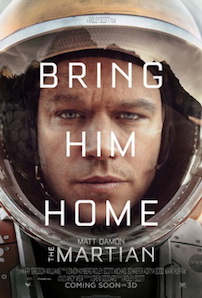
“The Martian” — Oh yeah I had been looking forward to Matt Damon as Mark Watney, and I was definitely entertained by this 3-D action space film adapted from Andy Weir’s bestselling book. I liked it but I guess I liked the book a tad better. The film had some great imagery, but for whatever reason it did not stay with me for long like substantial films usually do.
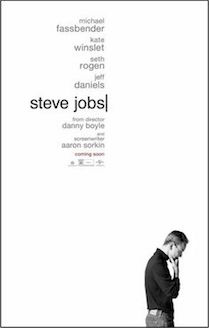
“Steve Jobs” — Whoa, does this film have a lot of dialogue in it or what. It’s filled to the brink, courtesy of Aaron Sorkin, and slightly reminiscent of “The West Wing.” It’s innovative and cuts to some of Steve Jobs’s inner character. I liked it but it also wore me out in parts — with the around and around cerebral dialogue. But Michael Fassbender seemed amazing as Jobs, and Kate Winslet and Seth Rogen were quite excellent too.
That’s it for now. How about you — have you read “The Dog Stars” or seen any of these movies, and if so, what did you think? Continue reading
Posted in Books, Movies
26 Comments
Wordfest, Princes, and Just Kids
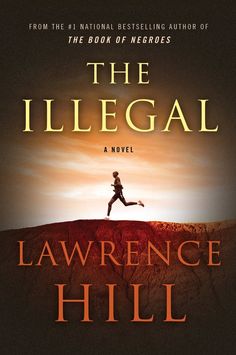
I’m just now catching up as last week was busy because our city’s annual writer/book festival called Wordfest was going on. I attended many of the book readings and talks, which were wonderful as usual. Of course a slew of Canadian authors read from their works including: Lawrence Hill, Patrick DeWitt, Nick Cutter (a.k.a. Craig Davidson), Elizabeth Hay, Andre Alexis, and Marina Endicott. Have you read any of these authors? I’m curious to read Lawrence Hill’s new novel “The Illegal,” which seems to be a big departure from his 2007 epic “The Book of Negroes.” I also hope to read Elizabeth Hay’s 2007 Giller prize-winning novel “Late Nights on the Air,” which I bought at the festival and had her sign.
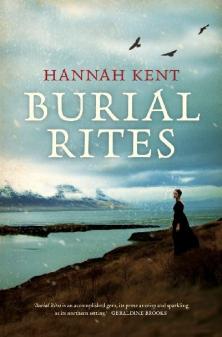
Other authors I heard at Wordfest included: John Vaillant, Hannah Kent, Sarah Winman, Sara Blaedel, Cecilia Ekback, Yrsa Sirgurdardottir, and former child soldier Michel Chikwanine whose talk was very tragic and powerful. There were some neat discussions, and I was impressed by all the authors — some of whose books I’ve read. I especially liked Australian author Hannah Kent who was well spoken and is very bright for her years. Her bestselling 2013 novel “Burial Rites” has been translated into 23 languages and was written in her twenties. Have you read it yet?
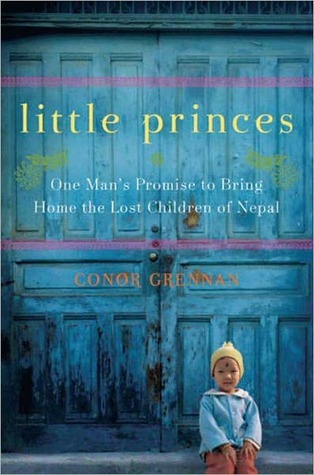
Meanwhile last week I finished the 2011 nonfiction book “Little Princes: One Man’s Promise to Bring Home the Lost Children of Nepal” by Conor Grennan. It’s not a genre I read often — that of a person going to a developing country, significantly helping others, and writing about his or her experiences — but I usually seem to benefit when I do as I often learn quite a bit in the process. This book was no exception, in fact “Little Princes” is as good as similar books — though I haven’t read Greg Mortenson’s “Three Cups of Tea yet — but “Little Princes” is informative and compelling. I read it for my book club, which plans to discuss it this week.
It’s about Conor Grennan who at the age of 29 in 2006 goes to Nepal — during the midst of a bloody civil war — to volunteer for three months at “Little Princes” orphanage. Reluctant at first to be a caretaker, Conor soon finds himself won over by the kids’ resiliency and fun nature. But while there he discovers a stunning truth: that they’re not really orphans but have been taken from their families like many others in the country, tricked by human traffickers promising the children’s safety from war for large sums of money. The traffickers in turn have typically either sold the kids into slavery, or left them somewhere terrible to fend for themselves — the lucky ones being the kids who’ve made it to the Little Princes orphanage or other safe havens.
Once stateside, Conor springs into action, starting a nonprofit organization to help rescue the lost or trafficked children of Nepal. He returns to the country and makes the dangerous journey to remote villages to contact the parents of “Little Princes” children, letting them know what’s happened to their kids and informing them of their whereabouts. Eventually Conor establishes a new orphanage in Katmandu to help save more children.
It’s commendable — his story and effort, and how much the organization he co-founded — Next Generation Nepal — has done to rescue hundreds of kids in Nepal and reunify them with their families. He put his life in danger a number of times to make it happen. I’m amazed by people such as Conor, who go against great odds to make the world a better place for others. The book kept my attention and is told very openly and modestly. It gives a vivid picture of the kids in the orphanage and what it was like then inside war-torn Nepal. There’s even a bit of a long-distance relationship Conor shares of a girl he comes to rely on stateside. So if you like books such as “Three Cups of Tea,” you might also like “Little Princes.”
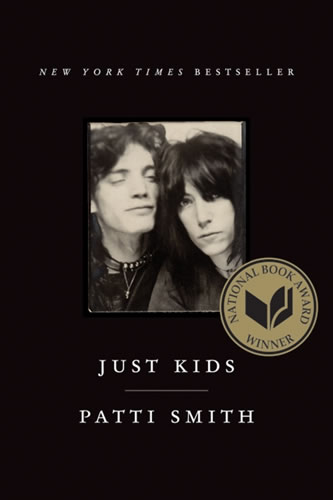
Finally last week, I listened to the audiobook of Patti Smith’s 2010 memoir “Just Kids.” About time, right? She has a new book out now called “M Train, which reminded me to get on the stick about her first book. I had always wanted to read “Just Kids” even though I wasn’t a huge follower of Smith’s music or poetry. I remember in college my roommate always played Smith’s 1975 album “Horses” which I thought was definitely cool but different and a bit weird. I was a fan of her song “Because the Night” which she co-wrote with Bruce Springsteen. In fact, I really wanted to hear about this collaboration and song in the book but alas it’s only briefly mentioned in “Just Kids.”
Most of the memoir of course is about her relationship with artist and photographer Robert Mapplethorpe, who was her world back when they were both starting out as artists in New York City. And it’s great that Patti Smith reads the audiobook. I found her quite down to earth and articulate, relating how her life unfolded and was back then. She pronounces her prose clearly as a poetess would. In her memoir she doesn’t seem too weird or strung out on drugs and I liked her sensibility. In fact the book hardly talks about drugs or alcohol, which is pretty refreshing for a rock memoir. Instead what I took away from “Just Kids” was:
** the places Smith frequented (such as the Chelsea Hotel and CBGB etc.) and the atmosphere of New York City back in the ’60s and ’70s, as well as the famous folks Smith knew there. I had no idea she had a relationship with Sam Shepard once; wow he must have been a real looker back then!
** the deep and touching bond she had with Robert Mapplethorpe, long after they went on to other relationships and muses
** the perseverance of both Smith and Mapplethorpe to make it as artists and be themselves, how they supported each other and didn’t sell out their dreams — was pretty incredible
All of that struck me in the book. And although I haven’t been a huge fan of her music or poems, I respect Patti Smith, her commitment to her artistry, and what she was able to do. And I’m glad to have finally gotten to her illuminating and poignant memoir “Just Kids.”
What about you — have you read any of these books mentioned above, and if so, what did you think?
Posted in Books
18 Comments
Did You Ever Have … and Wolf Winter
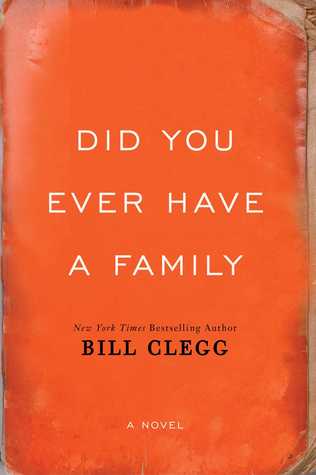
Somehow I missed jumping on the overall bandwagon for Bill Clegg’s popular 2015 novel “Did You Ever Have a Family.” I know everyone raved about it. I know some called it “the best novel of the year.” I know it was longlisted for the Man Booker Prize. I know I should have liked it a whole lot more, but somehow alas it didn’t turn out that way, and I’m still wondering a bit why.
I listened to “Did You Ever Have a Family” as an unabridged audiobook, and at the time, for some reason, I didn’t realize it was the author who was reading it. Usually I love when the author reads their own book for the audio (especially with memoirs — it’s terrific) but sometimes with novels it’s not so great — as was the case this time. Clegg read it in a monotone voice and didn’t differentiate between any of the many characters. I found myself questioning, “Is this guy getting paid for this?” If I were the publisher, I think I would have found someone else, but alas, I adapted to his reading style.
It doesn’t spoil anything to say “Did You Ever Have a Family” is about a horrific tragedy that takes place in a small Connecticut town after four members of a wedding party, including the bride and groom, are killed in a fire the night before the wedding. That starts the book, and the rest of it delves into who these four people were, and how the tragedy affects their relatives’ and friends’ lives in the community after the terrible event.
Quite a lot of people inhabit the novel, including 10 who narrate the story in alternating chapters. The main characters are the bride’s mother, June, and the groom’s mother, Lydia — whose lives are shattered — but other narrators include the wedding caterer who never got paid, the teenage pothead who lives nearby, and the motel owners on the West Coast who assist June when she eventually settles there to get away. These characters are just the tip of the iceberg.
I liked parts of “Did You Ever Have a Family” — some of the details and descriptions stuck out, and the conversational tone was enticing. I also liked how one comes to learn much more about the characters’ histories than what happens at the beginning of the book.
But unfortunately I felt disconnected or distanced from quite a few of the characters. The many alternating narrators, some of whom are very peripheral to the story, seem to take away from the book’s focus. Unlike the novel “Station Eleven,” which also had a big cast of characters but which is great, this novel became lost and fell flat to me despite all of its characters’ tragedies.
And indeed there is a lot of tragedy and grief in “Did You Ever Have a Family.” Not only is there the main fire disaster, but there’s also cancer, rape, abuse, drug overdoses, and other mayhem among the peripheral stories. All of it felt pretty macabre to me. And although some of the characters find a bit of solace at the end, I was relieved when the novel was finally over.

In the meanwhile I finished off Cecilia Ekbäck’s 2015 literary murder-mystery “Wolf Winter.” Ekback is a Swedish-born author who now lives in my town and I met awhile back on Independent Bookstore day. I had wanted to read her debut novel before she and others appear at our annual book festival next week. So I dove into it and slowly made my way through its 405 pages.
“Wolf Winter” is a highly atmospheric novel that takes place in Swedish Lapland in 1717. It’s about a Finnish family who moves to a northern Sweden mountainside called Blackåsen, where only a handful of settler families live, occasionally mixing with the Laplanders. There the family comes across a dead body high up on the mountain, which some dismiss was killed by an animal, but the Finnish mother believes differently. She starts poking around asking questions, and as a brutal winter comes on, she begins to learn some disturbing truths about the area and the other settlers.
“Wolf Winter” conjures a vivid spooky and wintry atmosphere in a land where the King and Church rule supreme. The main characters are the Finnish mother, and her eldest daughter who feels a power from the mountain, as well as the area’s priest who must investigate the case and keep the settlers in line.
I really liked the book’s imagery and characters — the only trouble is I felt there could have been a bit more action among its many pages. A lot of the drama comes at the very end, but I wish more surrounding the culprits, their motives, or other happenstances would have been spread out across the story. As it was, the action seemed a bit hung up and I thought the novel could’ve been edited down shorter and tighter.
On its cover, I see that “Wolf Winter” has been compared to Hannah Kent’s novel “Burial Rites,” though I still need to read that one to see if there’s any truth to that. It might make for an interesting comparison.
What about you — have you read “Did You Ever Have a Family” or “Wolf Winter” and if so, what did you think? Continue reading
Posted in Books
22 Comments
Watchman and Station Eleven

Last Sunday I turned 50, that’s right the dreaded 5-0, and to ease me over this middle-age hurdle my husband and I spent a getaway weekend in Aspen, Colorado, which is fabulous this time of year. It made it a very special occasion especially since I once lived there for a few years right after college. Back then, I skied and worked at the wonderful indie “Explore Booksellers” on Main Street, which thankfully still exists. It was a good life, and I’m not exactly sure now why I left. On this trip, we rented bikes and rode into the mountains to see the fall colors. It was gorgeous. See the Maroon Bells photo above.
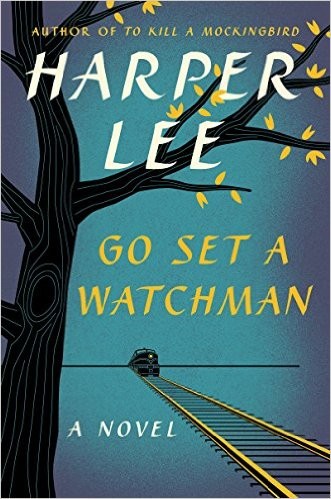
While on the flights, I made my way through Harper Lee’s much-ballyooed novel “Go Set a Watchman.” If for some reason you were under a rock and didn’t hear, it’s about what happens when 26-year-old Jean Louise (Scout) returns home to Maycomb, Alabama from New York to visit her aging father, Atticus Finch. During her homecoming, set amid the tensions of the civil rights era, she learns some disturbing truths about her family, the town, and those closest to her.
Of course I was really hoping to like this one because of Lee’s classic “To Kill a Mockingbird,” which I had just reread this year, but alas it wasn’t to be. I should have known when Salman Rushdie mentioned just last weekend in the New York Times that he didn’t finish “Go Set a Watchman,” that it wasn’t a good sign. It’s not a hard book to read but I struggled with seeing it till the end too. It took me over a hundred pages to get into the novel, then I found the middle more interesting, but then the ending seemed to turn into a monologue argument that just felt no longer like a narrative.
There were parts I liked but on the whole I just didn’t care for “Go Set a Watchman.” And it wasn’t because of how Atticus had changed in this book, or its theme of Scout’s homecoming and her revulsion towards the racism she finds there. Those are interesting themes, but it just felt like an early draft. The narrative failed to grab me time and again and I struggled to get through it. I can see why Harper Lee never thought to publish this before because it wasn’t a final version.
What the book left me feeling was: what a great editor Lee must have had — not only to suggest the story instead be told from Scout’s childhood point-of-view — but also that her editor and Lee had apparently vetted and revised the manuscript so thoroughly together over years that it became “To Kill a Mockingbird.” Whether “Watchman” is valuable as a “literary artifact,” I’m still wondering about. I guess it is, but it doesn’t necessarily make me want to read through the trash bins of other writers for first drafts, despite how much I might want to hear a character — such as Scout’s — voice again.

I was disappointed by it, but luckily Emily St. John Mandel’s 2014 novel “Station Eleven” came to the rescue. I know most bloggers raved about this novel last year, but I’ve finally just gotten to it. I listened to it last week as an audiobook read by actress Kirsten Potter who did a wonderful job. Holy smokes, what an entertaining book! I plan to read it in print as well though my husband just snagged my paperback copy of it.
Although it’s a post-apocalyptic novel, “Station Eleven” is not your typical gory tale about the immediate aftermath of a horrific event. It focuses mostly 20 years after a flu pandemic has wiped out most of the world’s population and is about the new culture that emerges among survivors and their settlements. It’s still scary and suspenseful, though at times it’s funny and endearing too.
What makes the story so great is the wide array of characters in it that are brought to vivd life, which includes a famous actor, a traveling symphony, a comic book writer, a corporate consultant, and a paparazzo. These people’s lives end up connecting or reconnecting in interesting ways as they travel about. I loved how the story circled around and all came together. You have to pay attention though because the novel jumps around in time quite a bit and from one characters’ story to the next, but despite the jumpiness, “Station Eleven” seemed pretty easy to follow and quite manageable.
I won’t soon forget the characters of Arthur Leander and Miranda and Jeevan too. They were my favorites. I loved as well how “Station Eleven” is set both in Canada and the Midwest. My husband and I have been to Toronto, and Denman Island on the West Coast, which is fictionalized in the book as Delano Island, which is Arthur’s hometown.
Apparently as the author has said in interviews, “Station Eleven” was meant as a “love letter to the modern world” and all the wonderful things we take for granted from it on a daily basis, which the survivors in the book don’t have. She’s talking about electricity, heat, plane travel, and the Internet among other things. It’s wonderful too how creative the novel is and how it focuses on the arts as an integral part of the world to save and keep going. As “Station Eleven” makes clear “Survival is insufficient.”
What about you — what are your thoughts on Harper Lee’s “Go Set a Watchman,” or Emily St. John Mandel’s “Station Eleven”? Continue reading
Posted in Books
32 Comments
Stoner and Oliver Sacks
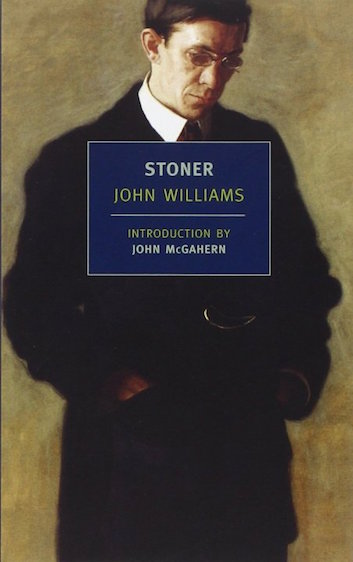
Although John Williams’s novel “Stoner” was first published in 1965, it seems to be having a resurgence these days in North America, and apparently became a bestseller in Europe in 2013. Go figure. It happened by word-of-mouth or what have you. New readers like me took to it through recommendations or book clubs and are passing along the word. I’ve seen “Stoner” talked about on various blogs and read it last week for my book club, which plans to discuss it later this month.
It’s still a bit mystifying how this quiet, grim novel grabbed the limelight, but I got caught up in the book, too, which is not hard to follow. It’s about a farm boy in the early 20th century, named William Stoner, whose dirt-poor parents send him to the University of Missouri to study agriculture, but he winds up being captivated by English literature instead. He takes to scholarly life and becomes a professor at the university, starting his career just before World War I.
The novel follows Stoner’s years there through retirement, capturing his joy of teaching but also the various disappointments he encounters along the way from his cold marriage and family life to circumstances that embroil him within the English department. He doesn’t seem to be able to catch a break. Even a love affair that makes him happy has its consequences.
It’s a bit bleak, the story, you feel for Stoner who is a shy, dedicated soul who doesn’t deserve the obstacles he faces. Yet what makes the novel so gratifying are the passages and truths about love and life that the author conveys. He cuts to the heart of it, without fanfare or sentiment. I wanted to mark and underline certain paragraphs but alas I had a library copy and couldn’t. I will have to get my own.
Another gratifying part is Stoner’s love of literature — his awakening to it, which brings him an awareness of his self. I adored this theme, what fan of reading wouldn’t? Literature is the one thing in the end that doesn’t seem to betray him. The novel reminded me slightly of Chaim Potok’s novel “The Chosen” because of Stoner’s intellectual awakening and scholarlyness through out, but it’s also mixed a bit with the grimness of perhaps a Richard Yates’ novel, one like “Revolutionary Road.” The novel “Stoner” is definitely a quiet, but affecting read, and one I will likely take up again in the years ahead. I only wish they hadn’t titled it “Stoner” because in my opinion it doesn’t really do the book justice.

I also finished this week Oliver Sacks’s autobiography “On the Move: A Life.” I listened to it as an audiobook as I walked my dog. As you might know, Sacks passed away last month at the age of 82. He was a well-known neurologist who worked with patients with various disorders and illnesses, which he wrote about in such books as “Awakenings” (1973) and “The Man Who Mistook His Wife for a Hat” (1985) among others.
I hadn’t read those, but I picked up “On the Move” because I thought his life would be quite full and fascinating to hear about, and indeed it was. In it, Sacks traces the experiences and adventures from his childhood in Britain in the 1940s and ’50s with his parents who were both doctors and his schizophrenic brother — to his medical residency and fellowships in California in the early ’60s where he took long motorcycle excursions and was a weightlifter on Muscle Beach in Venice — to his work and case studies thereafter at hospitals in New York City.
On top of that he relates his passion for open-water swimming, writing, traveling, and those close to him. He reveals his life as a gay man and apparently he went through a period of celibacy that lasted 35 years. It’s interesting to hear too of his friendships with the poet W.H. Auden, and scientists Francis Crick, and Stephen Jay Gould among others, as well as his time hanging out with Robert De Niro and Robin Williams from the movie inspired by his book “Awakenings.”
“On the Move” includes a lot about the neurological cases Sacks treated including patients with encephalitis lethargica, deafness, color blindness, autism, Parkinson’s, and Tourette syndrome. I learned a bit about these from the book and got a sense of how Sacks sympathized and bonded with his patients. He seemed to give them a voice and the care they so desperately needed long before many institutions did.
As much as he was a doctor, Sacks was also a writer and storyteller, filling hundreds of notebooks with writings, and publishing more than a dozen books. He seemed to have a voracious love of learning and was always involved in new things, which is evident in “On the Move.” All of this makes for a sprawling but vibrant and revealing account of his notable life journey. My only wish was that Oliver Sacks had read it himself for the audiobook instead of American actor Dan Woren, but nonetheless it still made for an entertaining and illuminating listen.
What about you — have you read John Williams’s novel “Stoner” or any of the books by Oliver Sacks — and if so, what did you think? Continue reading
Posted in Books
21 Comments
Between You & Me
Last week the smoke coming from wildfires in Washington state, Idaho, Montana, and British Columbia was brutal here. The sky was perpetually gray and you couldn’t go outside long without your eyes and lungs burning. I can only imagine how bad it was in the places where the fire actually was. Now finally the blue sky has returned and I’m no longer taking oxygen or the sky’s color for granted. I just hope rain will come soon to the areas still ignited in flames. This has been a particularly harsh summer for wildfires out West, and it’s made me look forward for once to cooler fall temps.
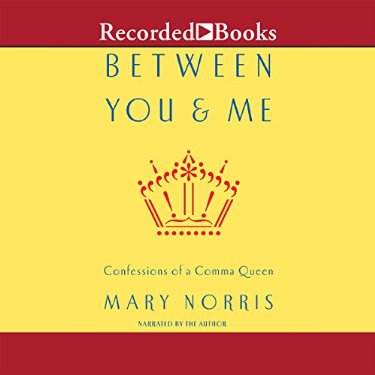
Meanwhile, my last book for August was Mary Norris’s 2015 memoir and grammar usage book “Between You and Me: Confessions of a Comma Queen.” I listened to it as an audiobook narrated by the author, which was great as I felt like I got a better sense of what Mary Norris is like. She’s definitely a hoot and seems eccentric in her grammarian ways and interests.
If you haven’t heard of this book or her, Mary Norris has been a copy editor and proofreader at The New Yorker magazine since 1978. She’s still there, holding fort over all the minutiae — particularly the style and grammar that goes into the mag. Her book reveals some anecdotes of her days at the magazine, but mainly it delves into usage issues, such as spelling, punctuation, that vs. which, pronouns and antecedents, and dangling modifiers, among other things. One needs to be quite taken with the particulars of punctuation and grammar to keep interested in this book because at times Norris can go on and on about a single example or topic, seemingly not knowing exactly when to stop.
I didn’t mind though because I worked for many years at a newspaper as a copyeditor myself so I used to deal with these things on a nightly basis. It gets ingrained in your bones — all the tiny details, where you have to catch everything and eliminate all the errors and put words into the style of the publication’s. It can be tough and hair-raising on deadline. Afterwards, you often wake up in the middle of the night worrying whether you made a “fix,” or if you think something slipped through. I remember those caffeinated late nights and some that gave me ulcers or at least felt like it.
But the best parts of “Between You and Me” aren’t really all the grammar schooling that’s in it, but more the anecdotes Norris shares of various writers and their particular style traits. She touches on the poet Emily Dickinson and her use of dashes, the life of lexicographer Noah Webster, and the writing of Herman Melville, particularly the mystery over who put the hyphen in the title of “Moby-Dick.” She mentions her dealings over the copy of writers Philip Roth, George Saunders, James Salter, and Pauline Kael among others. These are the parts I really enjoyed. I also liked the bits about her personal life and her work life of what it’s been like at The New Yorker. I would have liked more of this memoir-type stuff and less about usage rules.
In particular two chapters towards the end of “Between You and Me” could have been subbed out in my opinion for other material. In one, Norris includes a whole chapter on the usage of profanity in copy that is laced with … well, a lot of profanity that turns out not to be that enlightening. In the other, Norris writes about her fettish for pencils and pencil sharpeners, which I guess I found a bit amusing and charming. But then she really gets into the details of both. I’m not kidding, I haven’t heard or thought so much about pencils since grade school, and likely not back then either, LOL. Wow that’s when I thought “Whoa she’s pretty eccentric” … but not exactly in a bad way.
Still I was quite entertained by listening to Norris read “Between Me and You.” I laughed quite often and agreed with her on much of her wisdom and insight. She comes off as pretty down-to-earth, modest, salty, funny, and not snooty like one might think of a longtime reference guru. I think that’s what really won me over. She includes errors she’s made and doesn’t sound like a bossy know-it-all. (As long as you don’t write or say “between you and I,” she probably won’t go too batty.) For that, “Between Me and You” is a refreshing read among the recent spate of style and usage books that at times come across too heavy-handed in their righteousness or correctness.
What about you — have you read or heard of Mary Norris’s book — and if so what did you think of it? Or have you liked any other books on style and usage? Continue reading
Posted in Books
10 Comments
Girl in Glass / Review & Giveaway
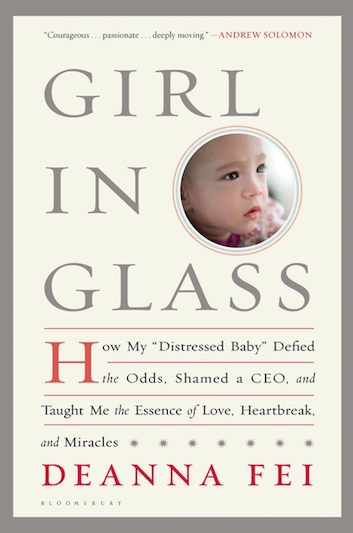
I’m not a mother, nor have I read many childbirth books, but I snapped up a review copy of Deanna Fei’s 2015 memoir “Girl in Glass: How My ‘Distressed Baby’ Defied the Odds, Shamed a CEO, and Taught Me the Essence of Love, Heartbreak, and Miracles” because I was curious about what the author and her family had endured and had to say. I wasn’t aware beforehand that she and her baby had been in the news in 2014 after AOL’s CEO had signaled out her baby’s healthcare costs, along with another’s, as a reason why he was cutting the company’s employee benefits. (More on this in a bit.)
Instead I picked up the book blind, whipping through the first half of the memoir, which is a nail-bitting account of how the pregnant author woke up one morning to find herself in labor at 25 weeks — over three months ahead of her due date. It hadn’t been a high-risk pregnancy; she had given birth to a healthy boy just a year earlier, and the new baby, a girl, was on schedule and healthy, according to her doctors. But for unknown reasons, the baby girl came very prematurely, weighing just 1 lb, 9 oz after being delivered by an emergency caesarean section. As a result, she was kept in intensive care for months and underwent various health complications.
“Girl in Glass” navigates the parents’ journey, specifically the mom’s, through these incredibly difficult and uncertain times. It’s very open and personal about her fears, her marriage, and the guilt over why the premature birth happened and her thoughts of whether the baby should be “let go.” She describes her and her husband’s harried lives commuting back and forth from their Brooklyn home caring for their lively boy, back to the Manhattan hospital where their daughter lay in a glass isolette hooked up to a contraption of wires. There’s times the author seems to be on the verge of a breakdown, unable to sleep and endlessly pumping milk to try and feed her tiny daughter. You can only hope beyond hope for the baby’s survival and improvement.
Towards the end of “Girl in Glass,” the author delves into a 2012 incident at a town hall meeting in which her husband’s then-employer, the CEO of AOL, blamed the healthcare costs of covering two “distressed babies” for the reason the company was cutting employee retirement benefits. Many surmised he was talking about their daughter, which he was. The whole thing, which seems terribly offensive and illegal — that of a CEO meddling in employees’ health expenditures and disclosing others’ medical information under the label of “distressed babies” — caused a national uproar and led the author to rebut him in an essay on Slate, ultimately earning the CEO’s apology.
At the end, “Girl in Glass” raises a lot of pertinent issues surrounding both premature babies and medical privacy infractions, which I found quite illuminating and relevant considering both are on the rise. Author Deanna Fei also lays out the history of neonatal care and today’s guidelines on which preemies are usually saved; at her daughter’s birth at 25 weeks, only half of the babies are said to survive, and many of those are disabled. Fei’s story packs a wallop for her candor during her daughter’s struggles, and is informative about issues that many of us never imagine, or plan on, could happen to our families.
What about you — have you heard of “Girl in Glass” or this author’s circumstances — and if so, what do you think? Or do you know of similar circumstances?
Thanks to Tandem Literary and Bloomsbury for providing me with a copy of “Girl in Glass” to review.
For those interested in the book, I have one copy to giveaway, just leave your interest in the comments and I will randomly draw a winner. Continue reading
Posted in Books
12 Comments
